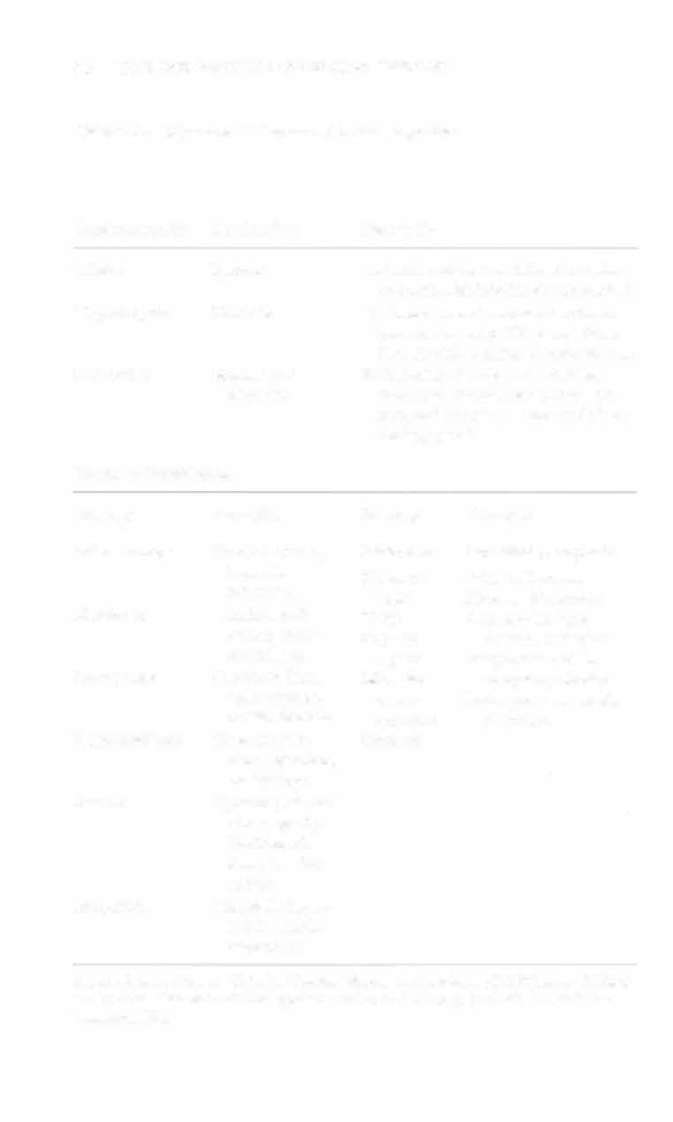i bc27f85be50b71b1 (18 page)
Read i bc27f85be50b71b1 Online
Authors: Unknown

44 ActITE CARE HANDBOOK FOR PHYSICAL THERAPISTS
A common form of rhythm disturbance is a PVC, which also can
be referred to as a ventricular premature beat. These abnormalities
originate from depolarization of a cluster of cells in the ventricle (an
ectopic (oci), which results in ventricular depolarization. From the
term ectopic (oci, PVCs may be refered to as velltricular ectopy.
Valvular Heart Disease
Valvular heart disease encompasses valvular disorders of one or more of
the four valves of the hearr. The following three disorders can occllr4�:
1 . Stenosis involves the narrowing of the valve.
2.
Regurgitation, the back flow of blood through the valve,
occurs wirh incomplete valve closure.
3.
Prolapse involves enlarged valve cusps. The cusps can
become floppy and bulge backward. This condition may progress
to regurgitation.
Over time, these disorders can lead to pumping dysfunction and,
ultimately, heart failure.
Refer to Table 1 - 1 4 for common valvular heart diseases and a
description of their signs and symptoms.
Myocardial a"d Pericardial Heart Disease
MyocardiaL heart disease affects the myocardial muscle tissue and can
also be referred to as cardiomyopathy; pericardial hearr diseases
affect the pericardium. Refer to Tables 1 - 1 5 and 1 - 1 6 for common
myocardial and pericardial diseases.
Heart Fail"re
Hearl (ailllre, a decrease of CO, can be caused by a variety of cardiac
pathologies. Because CO is not maintained, life cannot be sustained if
heart failure continues without treatment. Heart failure results in the
congestion of the pulmonary circulation and, in certain cases, even the
systemic circulation. Therefore, it is commonly referred to as CHF. The



CARDIAC SYSTEM
45
Table 1-14. Signs and Symptoms of Valvular Heart Diseases
Disease
Symptoms
Signs
Aortic
Angina, syncope or near
Elevated left ventricular wall
stenosis
syncope, signs of left
pressure, decreased subenventricle failure (dysp·
docardial blood flow, sysnea, orthopnea, cough).
rolic murmur, ventricular
hypertrophy
Chronic aortic
Angina, symptoms of left
Dilared aortic roor, dilated
regurgitation
ventricular failure.
lefr ventricle, diasrolic
murmur, lefr ventricular
hypertrophy
Acute aortic
Rapid progression of
5inus tachycardia to compenregurgitation
symptoms of left vensate for decreased stroke
tricular failure, pulmovolume. loud 53, diastolic
nary edema, angina.
murmur, signs of ventricular failure
Mitral
Symptoms of pulmonary
Left atrial hyperrrophy, pulstenosis
vascular congestion
monary hypertension,
(dyspnea, orthopnea), If
arrial fibrillarion, can have
patienr develops pulmoembolus formation (espenary hyperrension
cially if in atrial fibrilla
(which can cause
tion), long diastolic
hypoxia, hypotension),
murmur
he or she may have
angina, syncope.
Chronic
Symptoms of pulmonary
Lefr atrial enlargement, atrial
mitral
vascular congestion,
fibrillation, elevated left
regurgitation
angina, syncope, farigue.
atrial pressure
Acute mitral
Rapid progression of
5inus tachycardia, presence
regurgitation
symproms of pulmonary
of 53 or 54, pulmonary
vascular congesrion.
edema
Mitral valve
Most commonly asymptom
Systolic click, may have rachprolapse
aric, fatigue, palpiration.
yarrhythmia syncope
Sources: Data from SL Woods, ES Sivarajian-Froelicher, 5 Underhill-Moner (eds). Cardiac Nursing (4th ed). Philadelphia: Lippincorr. 2000; and MD Cheidin, M Sokolow, MB Mcilroy. Clinical Cardiology (6th cd). Norwalk, Cf: AppletOn & Lange, 1993.





46
ACUTE CARE HANDBOOK FOR PHYSICAL THERAPISTS
Table 1-15. Myocardial Diseases-Cardiomyopathies
Functional Classification
Cardiomyopathy
Dysfunction
Description
Dilated
Systolic
Ventricle is dilated, and there is marked
contractile dysfunction of myocardium.
Hypertrophic
Diastolic
Thickened ventricular myocardium,
less compliant to filling, and therefore decreased filling during diastole.
Restrictive
Systolic and
Endocardial scarring of ventricles,
diastolic
decreased compliance during diastole, and decreased contractile force
during systole.
Etiologic Classification
Etiology
Examples
Etiology
Examples
Inflammatory
Viral infarction,
Infiltrative
Sarcoidosis, neoplastic
bacterial
Hemaco
Sickle cell anemia
infarction
logic
Alcohol, bleomycin
Metabolic
e1enium defi
Toxic
Heat stroke, hypo-
ciency, diabe
Physical
thermia, radiation
res mellitus
agents
Postpartum cardio
Fibroplasric
Carcinoid fibro
Miscellamyoparhy, obesity
sis, end om yoneous
Status POSt myocardial
cardial fibrosis
acquired
infarction
Hypersensiriviry
Cardiac trans
Ischemic
plant rejection,
methyldopa
Generic
Hypertrophic Cardiomyopathy,
Duchenne's
muscular dystrophy
Idiopathic
Idiopathic hypertrophic cardiomyopathy
Source: Adapred from L Cahalin. Cardiac Muscle Dysfunction. In EA Hillegass, HS Sadowsky (cds). Essentials of Cardiopulmonary Physical Therapy (2nd cd). Philadelphia: Saunders, 200 I .